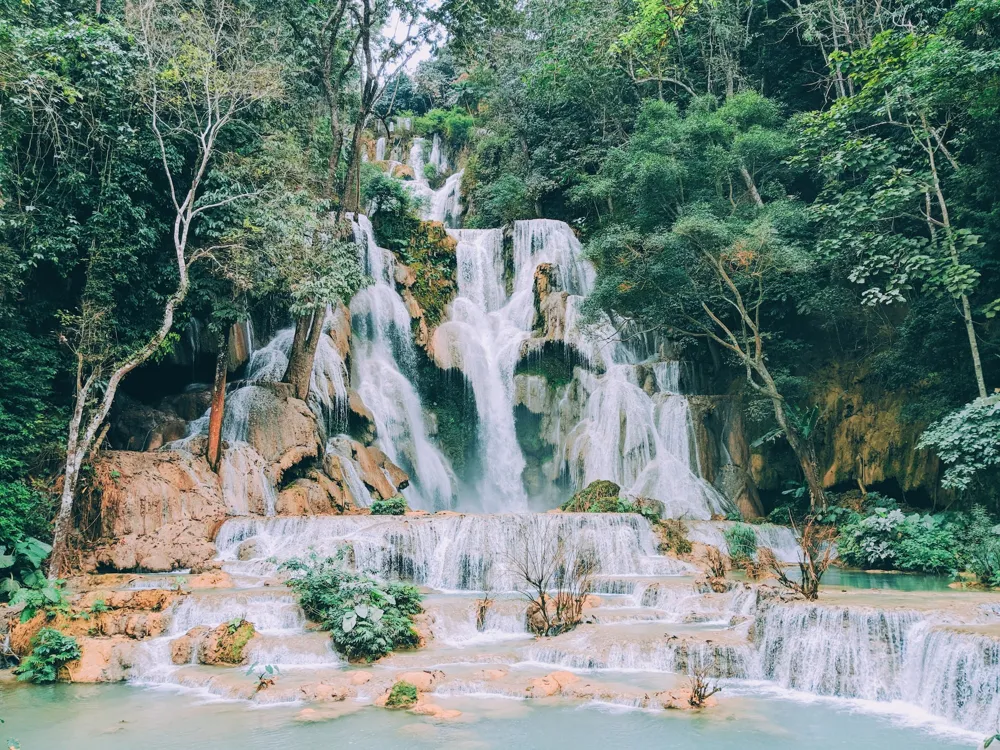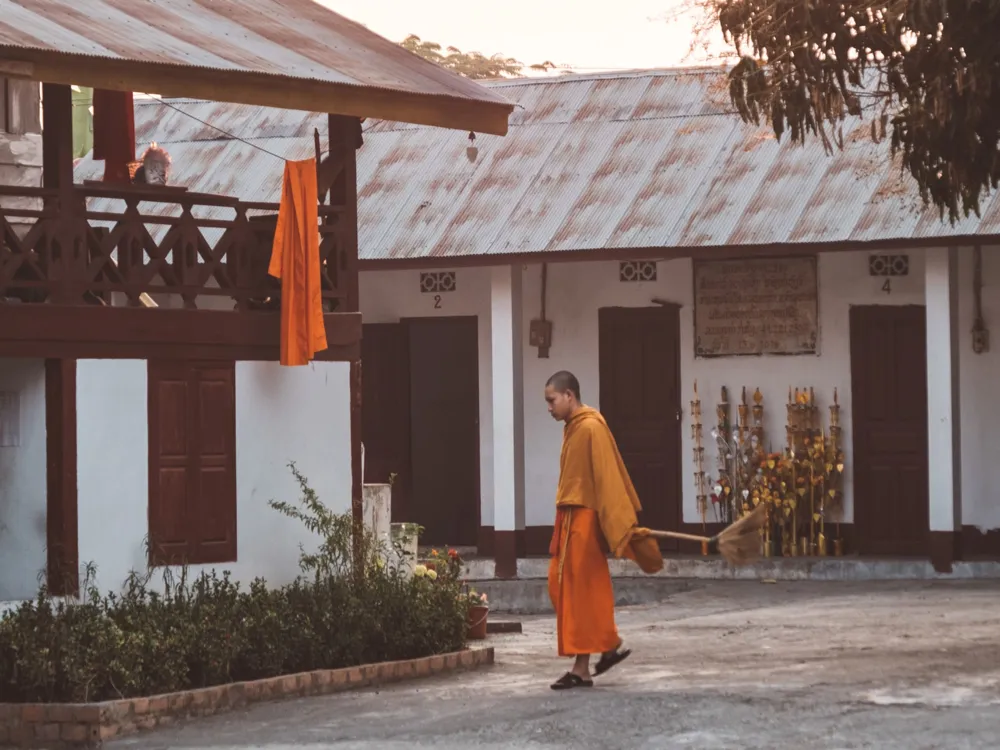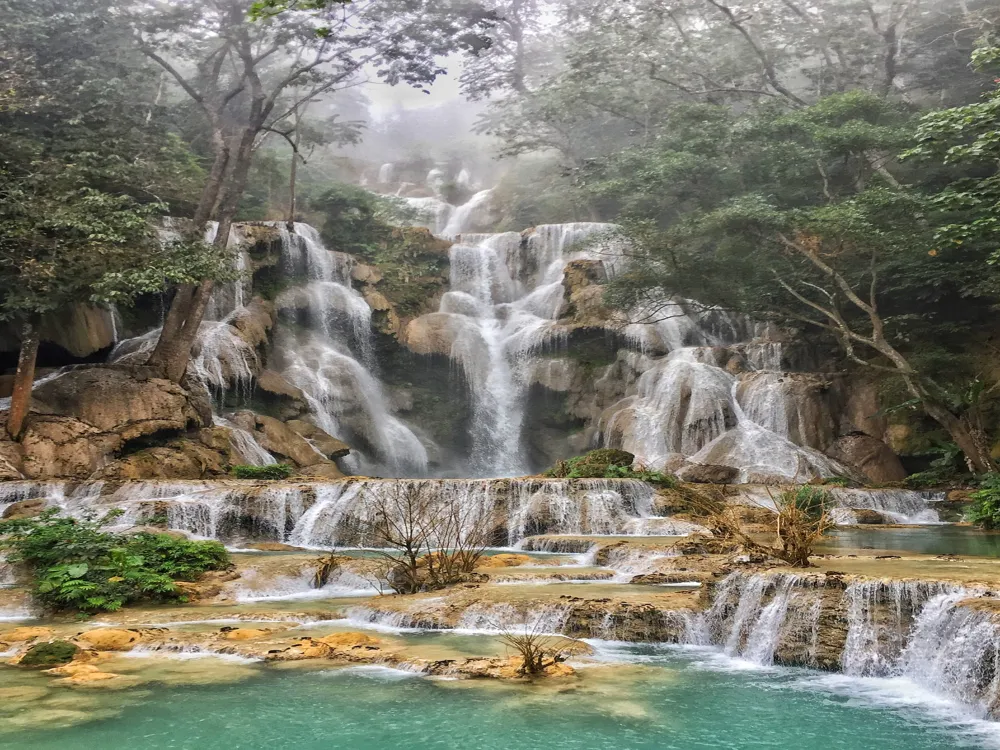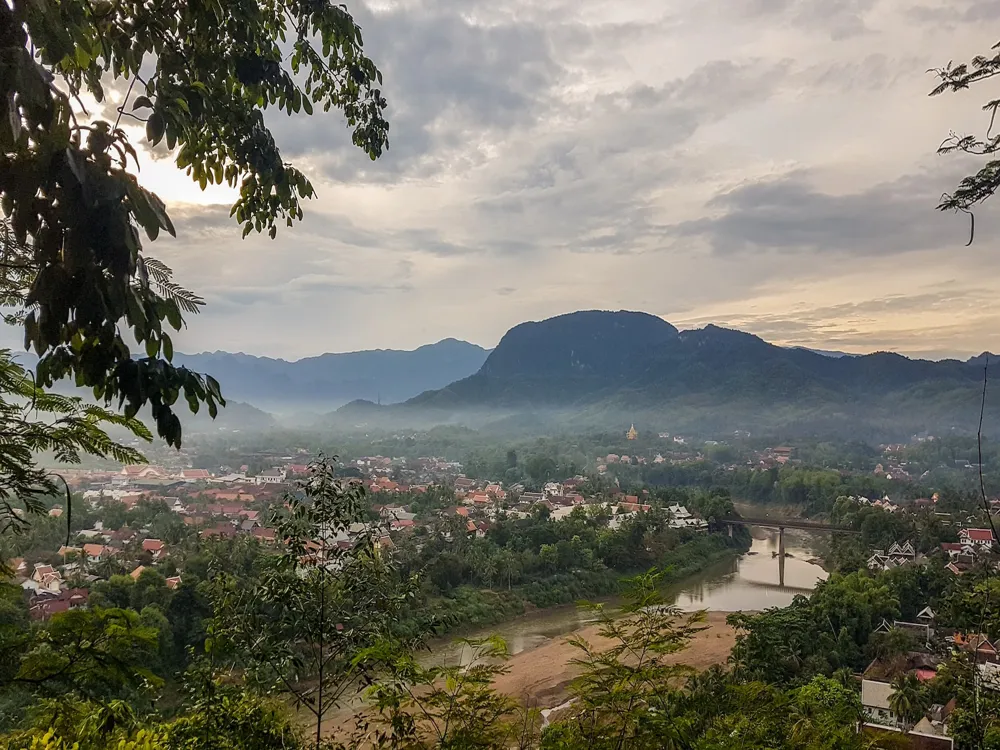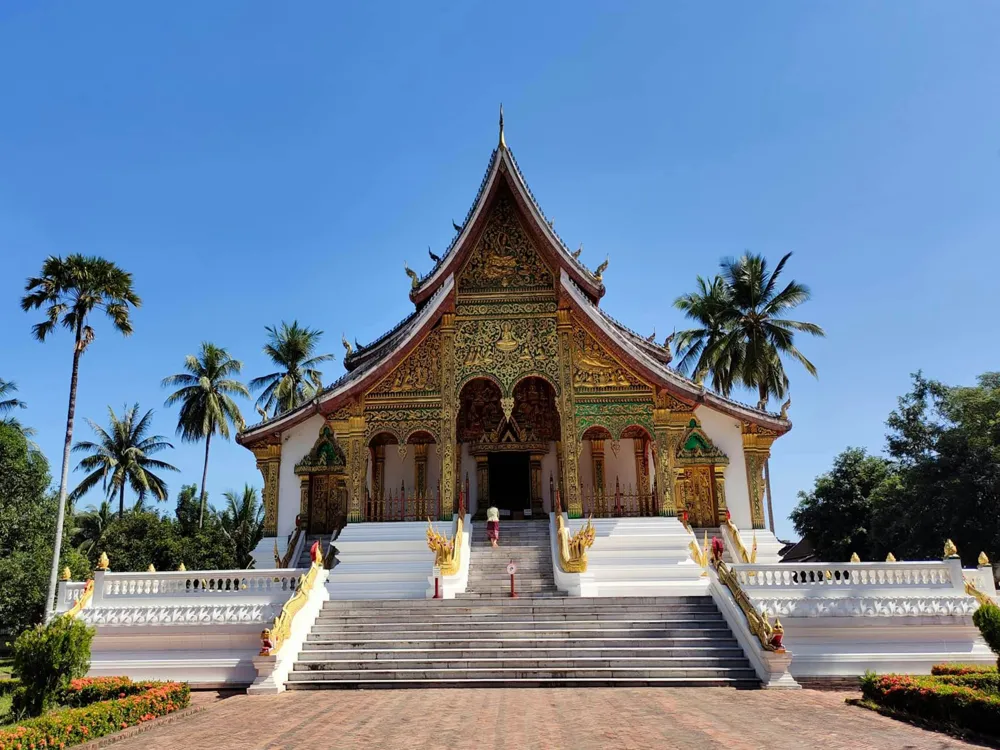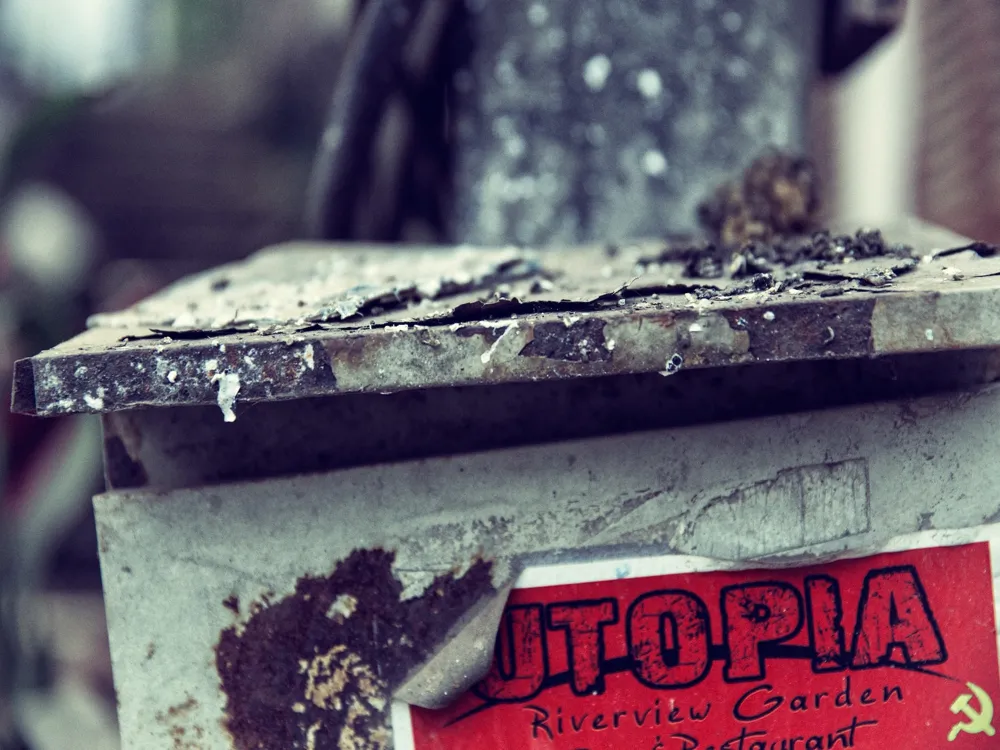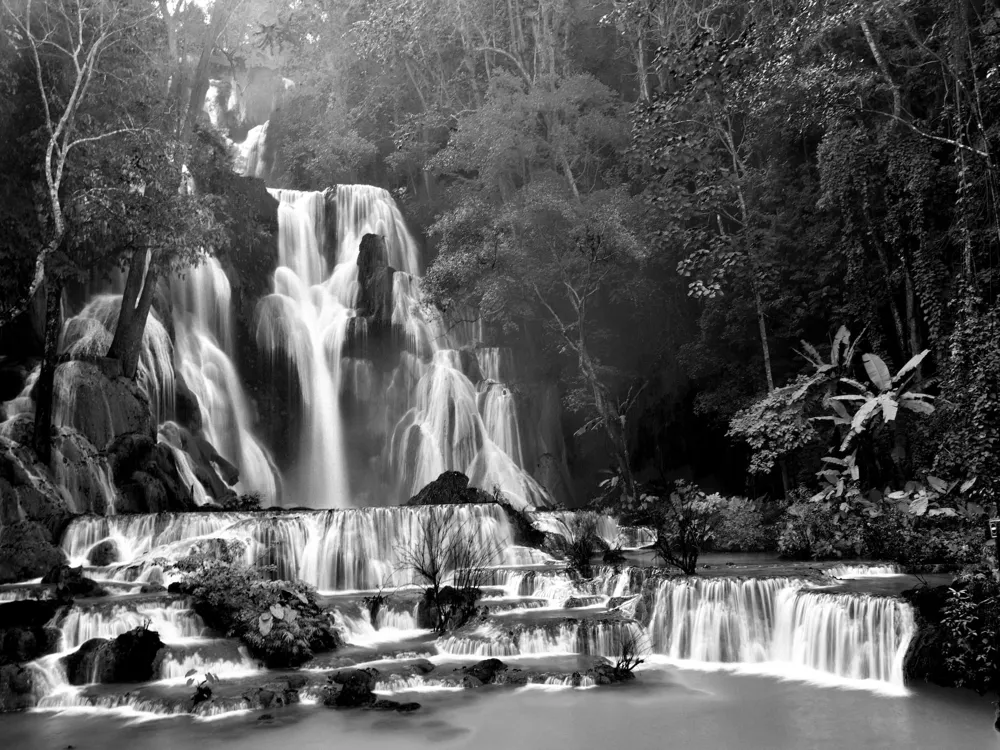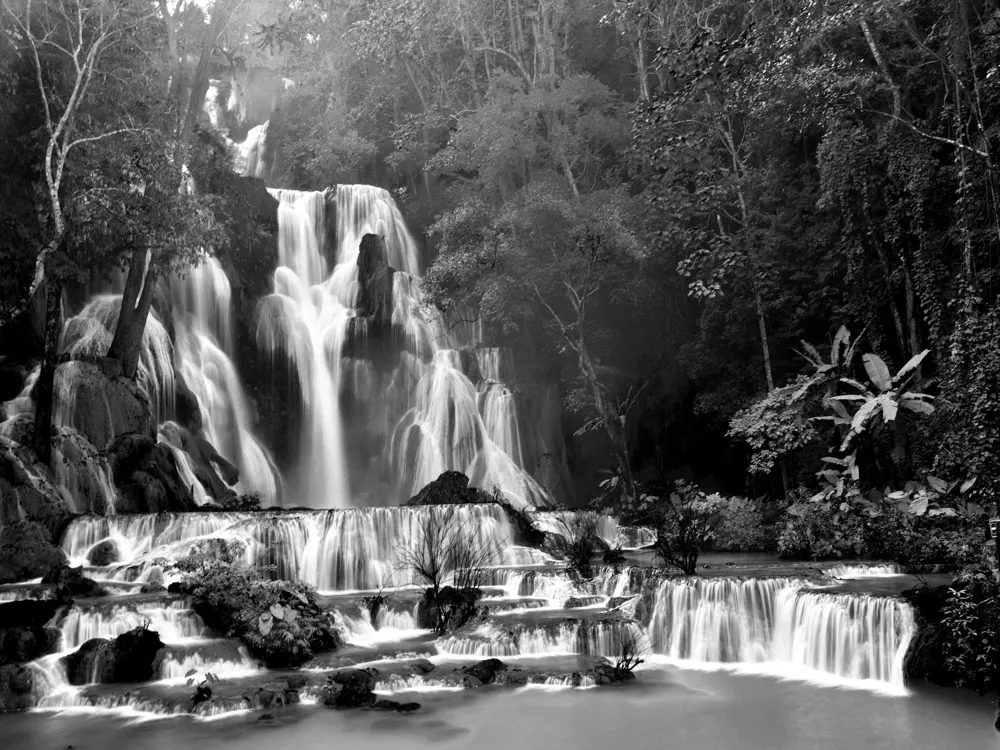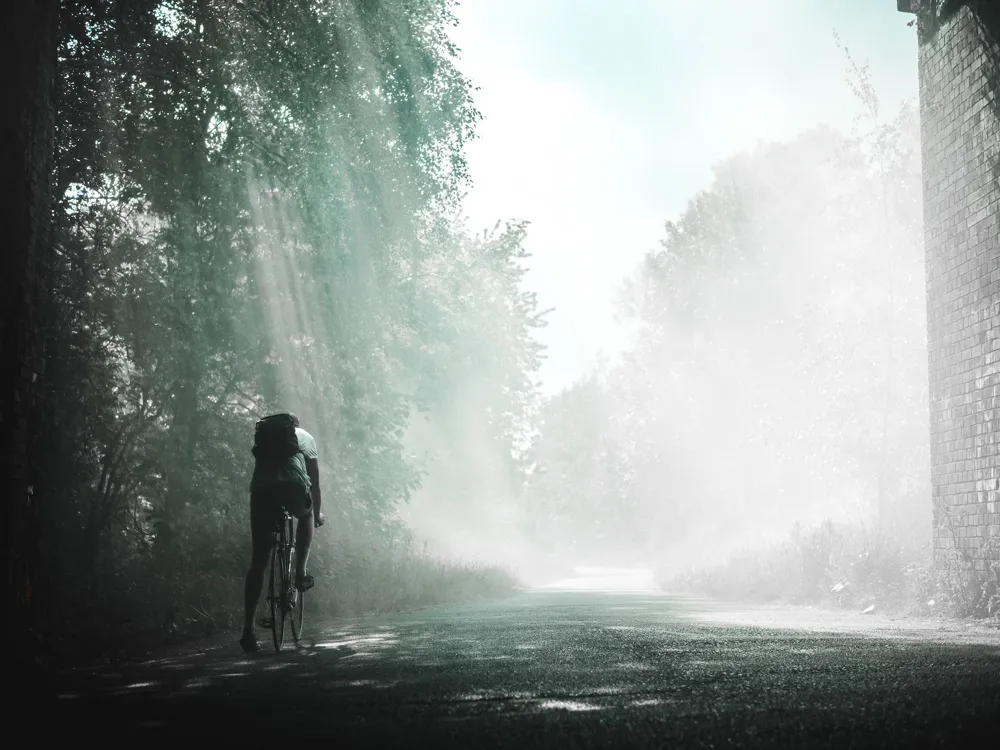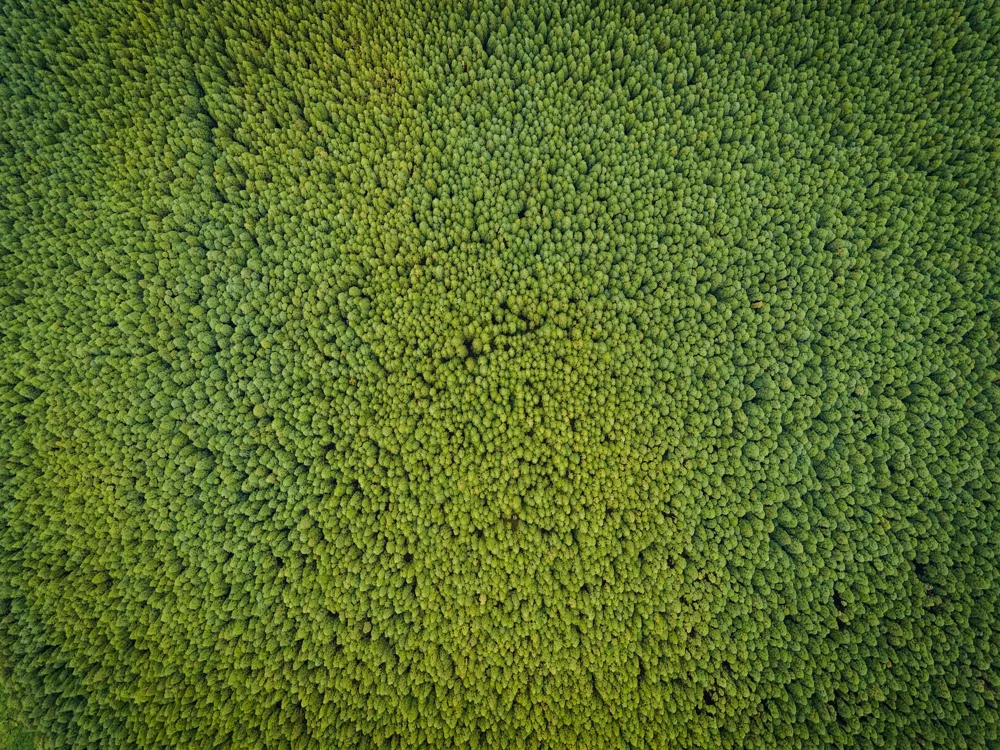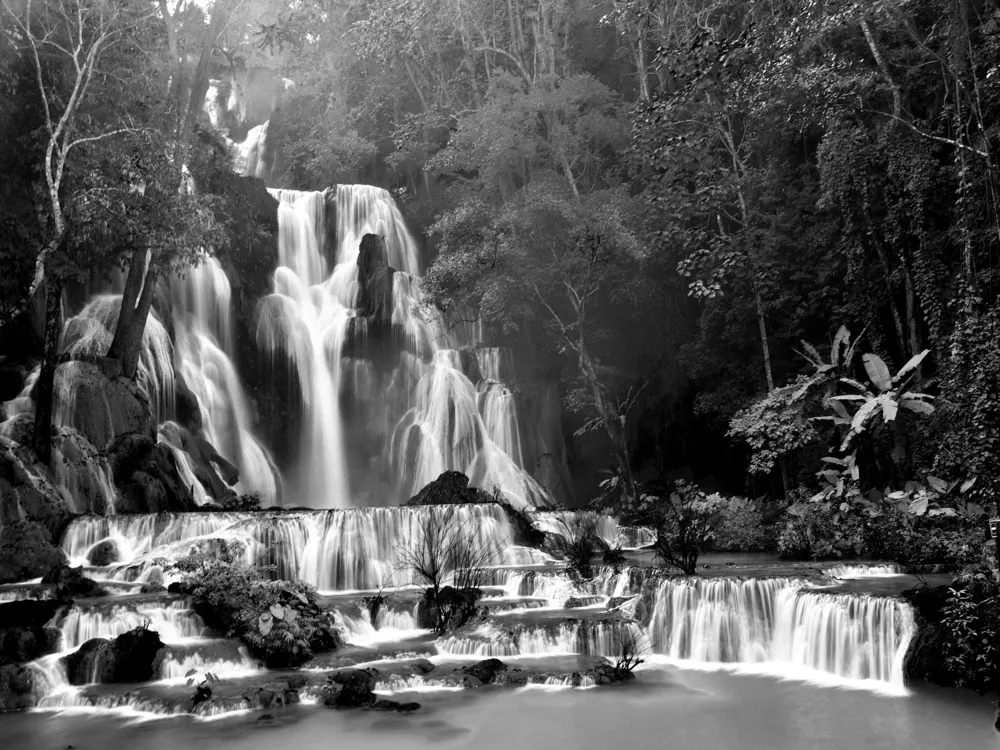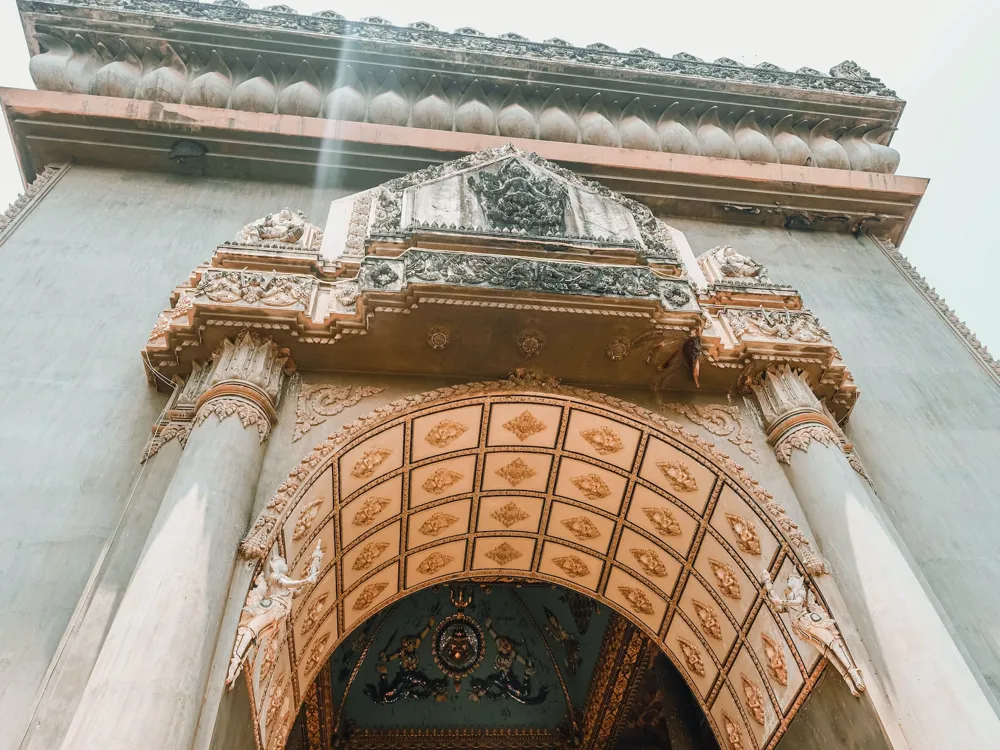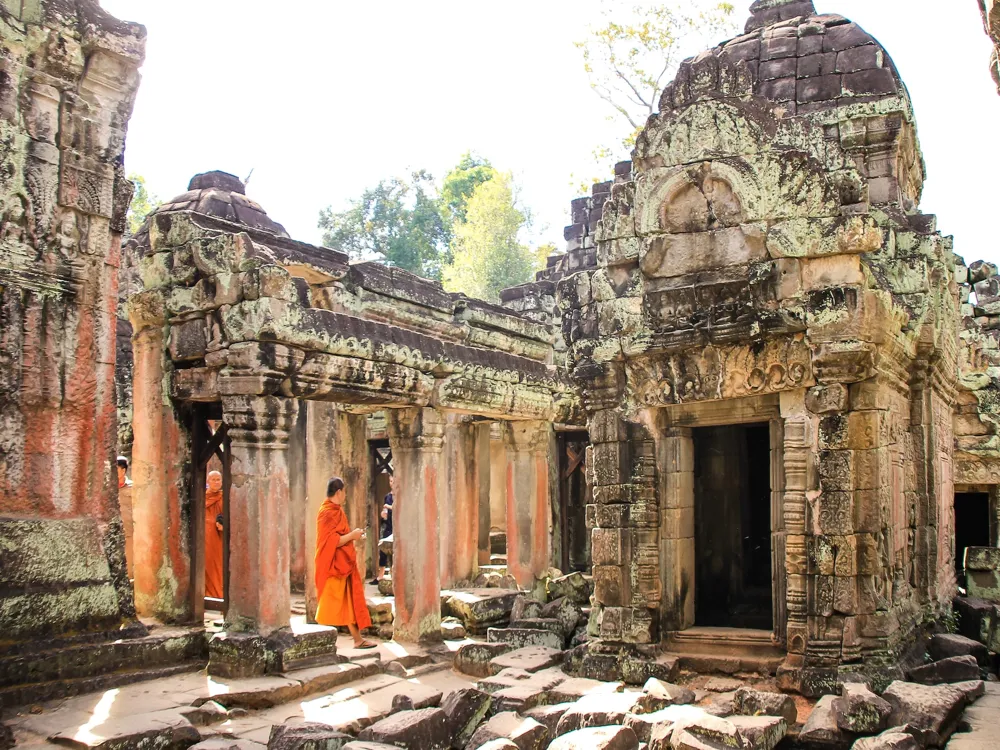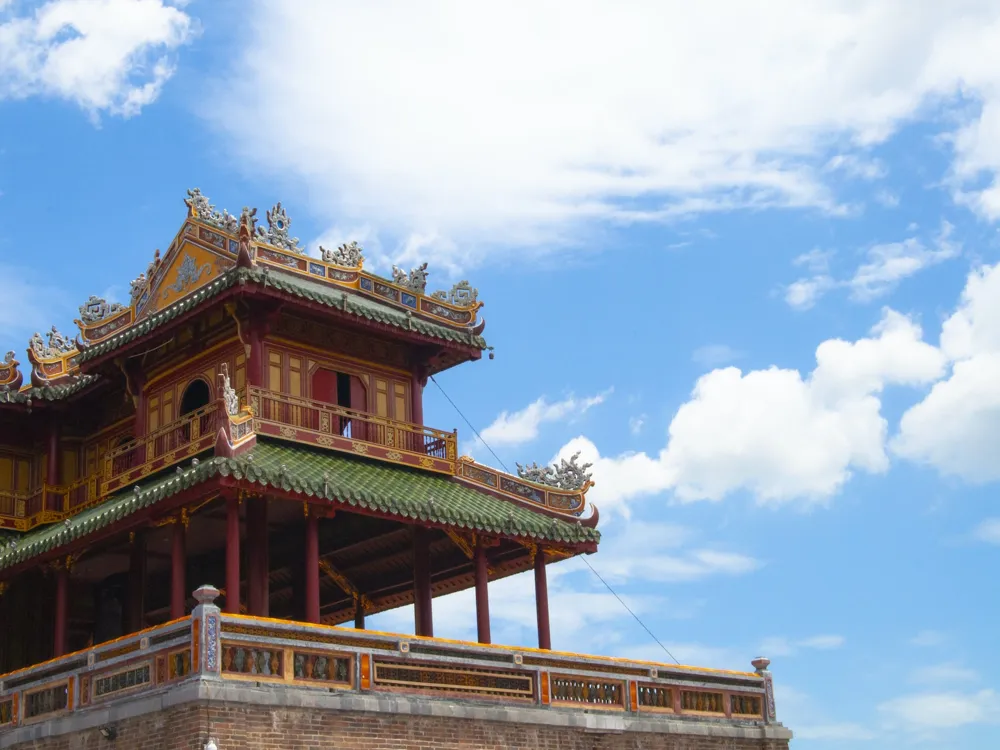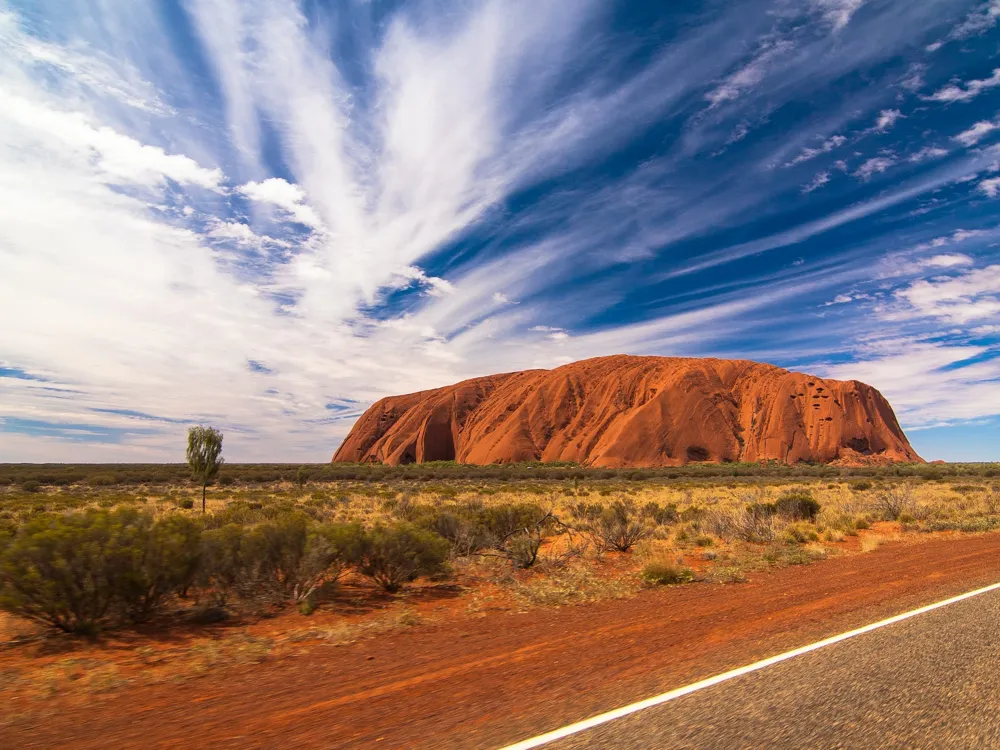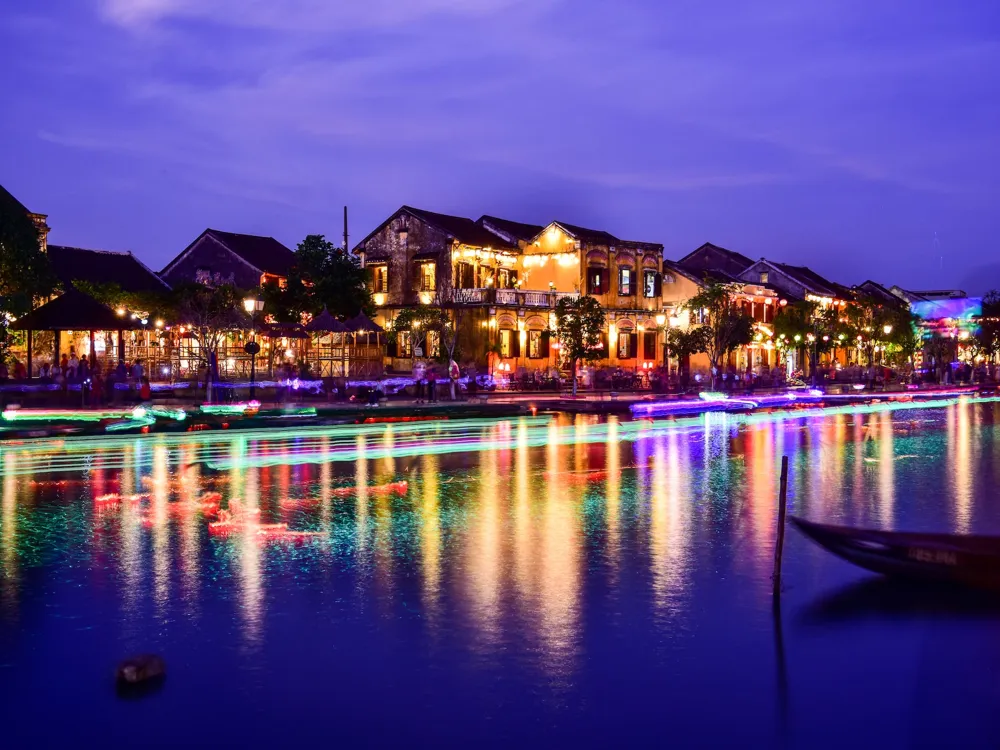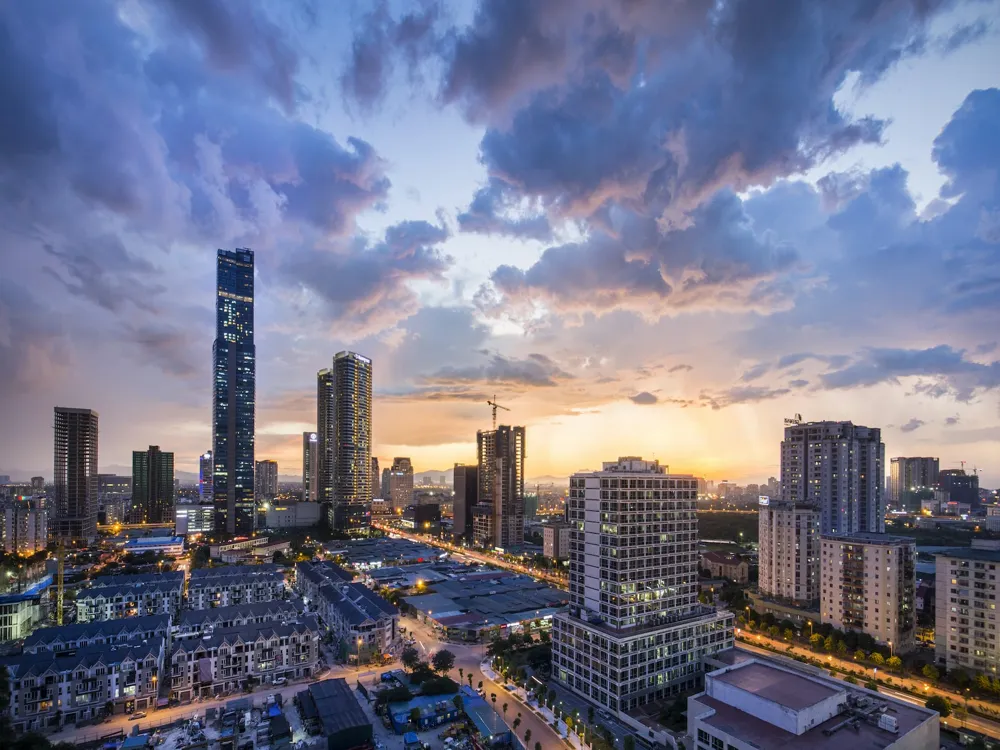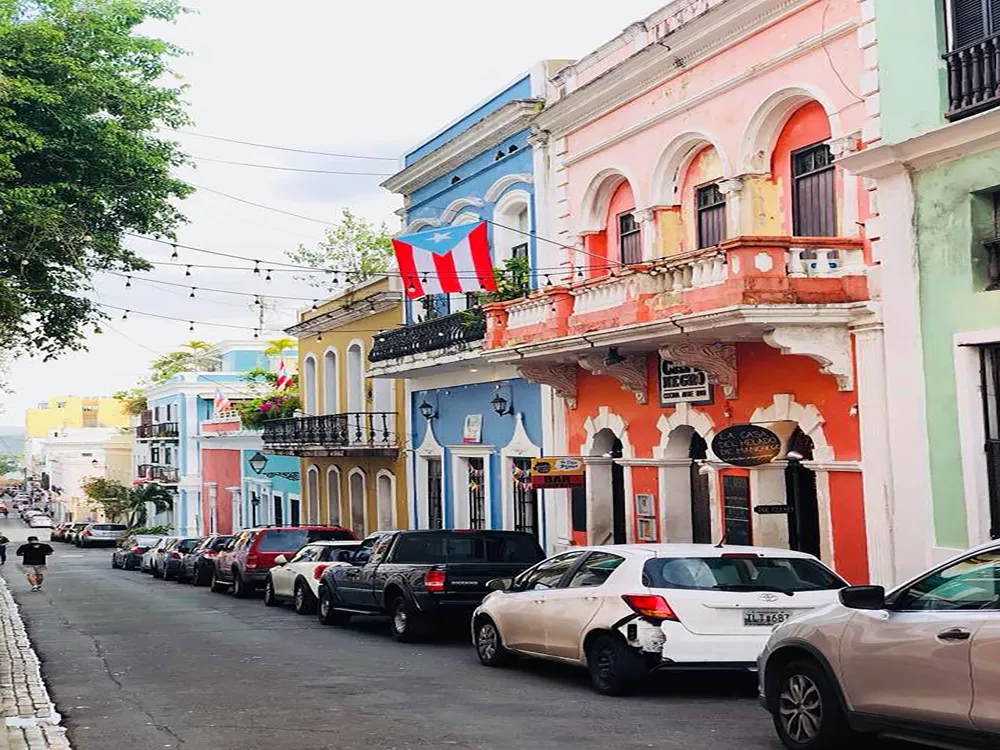Plan Your Travel To Luang Prabang
Luang Prabang Travel Essentials
Rating:
Weather:
Ideal duration: 3 days
Best Time: November-March Read More
Planning a Trip? Ask Your Question
Places To Visit In Luang Prabang
"Luang Prabang: Let's just relax"
Luang Prabang Tourism
Nestled in the lush landscapes of Laos, Luang Prabang is a hidden gem awaiting discovery by avid travellers.This UNESCO World Heritage Site beckons with its rich cultural tapestry and serene ambiance. As you embark on a journey to Luang Prabang, prepare to be enchanted by its historic temples, vibrant markets, and the gentle flow of the Mekong River. Immerse yourself in a unique blend of tradition and tranquilly, making Luang Prabang a destination like no other.Luang Prabang, a UNESCO World Heritage Site, is a charming city located in northern Laos, nestled in a picturesque setting at the confluence of the Nam Khan and Mekong rivers. Known for its well-preserved colonial architecture, Buddhist temples, and vibrant cultural scene, Luang Prabang offers a unique and enchanting experience for visitors.
Laos is a country where you won't see anything Western or modern. There are no McDonald's, KFC, Pizza Hooches, or Starbucks coffee shops there. Luang Prabang is an awful patchwork of traditional Lao rustic houses with hints of European architecture. It's a megacity in north-central Laos, consisting of 58 conterminous townlets, of which 33 comprise the UNESCO Town of Luang Prabang World Heritage Site. Luang Prabang's World Heritage-championed old megacity clearly lives up to its name. deposited at the convergence of the potent Mekong and the unpretentious Nam Khan, the megacity forms a promontory in the midst of a Laos paddy-filled geography where a relaxing swash view is nowhere far down. Home to a unique marriage of French coloniser and Indo-Chinese architectural styles, it's easy to see why the main centre has World Heritage status. Every caller should start the day off by giving alms to the original monks. There are so numerous monks in Luang Prabang—more than 1,200 live there ( ten percent of the megacity's population) — that occasionally the whole megacity can feel like a friary. A number of social palaces have since been converted into hospices and caffs. In the night request, one can find a lovely selection of handwrought fabrics made by the original and hilltribe people girding Luang Prabang. Luang Prabang, pronounced latrine-ang pah-bang and also spelled Louangphrabang, is the former capital of Laos and a UNESCO World Heritage City. Nestled in a slim vale shaped by lofty, green mountains and cut by the nippy Mekong and Khan gutters, Luang Prabang exudes tranquilly and casual majesty. A bitsy mountain area for more than a thousand years and designated a UNESCO World Heritage Site in 1995, Luang Prabang is endowed with a heritage of ancient red-encamped tabernacles and French-Indochinese armature, not to mention some of the country’s most refined cookery, its richest culture, and its utmost sacred Buddha image, the Pha Bang. For those familiar with Southeast Asia, the very name Luang Prabang conjures up the classic image of Laos: thoroughfares of ochre coloniser houses and swaying triumphs, lines of saffron-robed monks gliding through the morning mist, the sonorous thump of the tabernacle cans before dawn, and, of course, longtail boats contending down the Mekong before the swash slips out of view through a confluence in the mountains. The ancient city of Luang Prabang is a UNESCO World Heritage Site in Laos. Located 700 metres above sea level in northern Laos, it’s encircled by mountains at the convergence of the Nam Khan and Mekong Rivers. It's this heritage of Theravada Buddhist tabernacles, French-Indochinese shophouses, and royal mystique that lends Luang Prabang a pull unmatched by any other megacity in Laos. This isn't only where the first proto-Lao nation took root; it’s also the motherland of innumerous Lao rituals and the origin of a line of autocrats, including the autocrats of Vientiane, Champasak, and Lane Xang. Luang Prabang people are extensively proud of their vital part in Lao history. Indeed, they ’re kindly known for their dressed ways in the rest of the country; in Lao cleaner operas, the croaker or the intellectual always speaks with a Luang Prabang accentuation. Luang Prabang’s strict structure law, drawn up by UNESCO, keeps it from getting another ultramodern architectural agony without turning it into a gallery. inescapably, the megacity has lost some of its sleepy charm and comforting serenity as a result of the growing affluence of excursionists, but when exploring the side thoroughfares and fine lanes, its not hard to feel as though you ’ve stepped into the megacity of yore. The corridors of the megacity do formerly feel exorbitantly touristy; indeed, on stretches of Sisavangvong Road, were it not for the unmistakable architecture, you could be anywhere differently on the well-trodden Southeast Asian sightseer trail, especially when you ’ve come from other corridors of the country where tourism is still a novelty. Though the megacity remains unexpectedly laidback, with none of the hassle associated with other corridors of Asia, a field expansion is due in 2013, which will allow larger aeroplanes to fly in and out of Luang Prabang, meaning the small-city charms of this beautiful megacity could be wormed on farther. Most trippers spend only a few days then on a whoosh-stop stint in Laos, part of a wider Mekong trip, though the megacity really demands longer. This is a destination stylishly savoured at a tardy pace. However, top precedence should go to the old megacity, dubbed by the UNESCO World Heritage Programme as a “ major preservation zone if time is limited. ”. In a day, you can fluently travel the sights, beginning with the daylight view from Mount Phousi and a wander around the lively morning request, before heading to the elegant Royal Palace Museum in the former Royal Palace, en route to Luang Prabang’s most emotional tabernacle, Wat XiengThong.However, enjoy some of the sights around Luang Prabang by taking a boat up the Mekong River and seeing the hundreds of Buddhas within the holy Pak Ou grottoes, or trip south through the girding hills to one of the area’s two major falls if you ’re there on an alternate day. But whatever you do, be sure to soak up Luang Prabang’s languid atmosphere by wandering the thoroughfares at dawn, when the city’s legion of monks receives alms and life and the megacity seems to have little changed from a century ago, or at dusk, when the air fills with unearthly chants drifting from the tabernacles. Luang Prabang’s air of serenity is disturbed only at jubilee time. The most notorious carnivals last for days and inspire a festival atmosphere that makes it easy to forget that these complex rituals have held the very structure of the area in place for centuries. Lao The New Year in April is maybe the city’s biggest jubilee, but near the end of the thunderstorm, two leaves—the boat races and the Festival of Lights—also bring Luang Prabang to a gleeful deadlock. A visit coinciding with one of these carnivals would clearly enhance your stay, though the most popular time to visit remains the cooler months of December and January, when the rainfall is clear and dry. Luang Prabang is considered by many to be the heart of Laotian culture, where you can see traditional rustic houses, royal structures, social armature, and over 30 handbaskets ( Buddhist sanctuaries). The city's major quarter is devoted to tourism, meaning there is plenitude of accommodation to suit all budget situations. This UNESCO World Heritage Site is the former capital of Laos, and you will see everything from golden-encamped tabernacles to vestiges of social French architecture there. Buddhist cloisters pullulate in Luang Prabang, and beforehand every morning, monks process through the thoroughfares collecting alms( their food for the day). Still, however, ask your hostel for a brief form assignment first—you have to distribute the food in a specific manner if you want to watch or share.
Luang Prabang Travel Packages
View All Packages For Luang Prabang
Must Know Before You Travel to Luang Prabang
Laos Tour Packages Being well-prepared is essential before you travel to the capital. Here's a quick guide to ensure a seamless experience:
Visa Requirements:
Ensure you have a valid visa before arriving in Luang Prabang. Check the latest updates from the official embassy website.
Cultural Etiquette:
Respect local customs and traditions. Modesty is key, especially when visiting temples. Remove your shoes before entering religious sites.
Weather Considerations:
Pack accordingly, as Luang Prabang experiences a tropical climate. Light clothing and sunscreen are essential, while a rain jacket can be handy during the wet season.
Currency and Money Exchange:
The official currency is the Lao Kip. Be aware of the limited availability of ATMs, and it's advisable to exchange currency at authorised outlets.
Health Precautions:
Consult your healthcare provider for vaccinations before travelling. Carry essential medications and stay hydrated in the tropical climate.
Local Cuisine:
Indulge in the flavours of Luang Prabang. Boldly sample local delicacies, from aromatic street food to elegant dining experiences.
Top Hotels In Luang Prabang
View All Hotels In Luang Prabang
More on Luang Prabang Travel
Nightlife in Luang Prabang
As the sun sets over the Mekong, Luang Prabang transforms into a quaint town with a lively nightlife. Explore charming bars and cafes, where you can mingle with locals and fellow travellers, savouring the vibrant atmosphere.
Shopping in Luang Prabang
Luang Prabang's markets are a haven for those seeking unique souvenirs. From handcrafted textiles to intricate silverware, the local markets offer a glimpse into the region's artistic heritage.
Exchanging Money in Luang Prabang
While Luang Prabang embraces modernity, it's advisable to exchange currency at authorised outlets. Be mindful of the limited ATMs and ensure you have sufficient cash for your explorations.
Daily Budget for Luang Prabang
Crafting a budget for your Luang Prabang sojourn is crucial. From accommodation to dining and activities, plan your expenses wisely to make the most of your stay in this captivating destination.
History of Luang Prabang
Immerse yourself in the historical wonders of Luang Prabang. From ancient temples to French colonial influences, each corner of this town narrates a captivating story of its past.
Exploring the Unseen: Luang Prabang's Hidden Gems
Unveil the lesser-known wonders of Luang Prabang. Venture beyond the well-trodden paths to discover serene landscapes, hidden waterfalls, and cultural nuances that add an extra layer to your travel experience.
Best Time To Visit Luang Prabang
Nearby Places Luang Prabang
Browse Package Collections
Browse Hotel Collections
Luang Prabang Photos
View All Photos For Luang PrabangFAQs on Luang Prabang
Q1: What makes Luang Prabang a unique travel destination?
A1: Luang Prabang stands out for its rich cultural heritage, preserved architecture, and the serene ambiance created by the Mekong River. The town's UNESCO World Heritage status is a testament to its unique charm.
Q2: Are there any specific visa requirements for visiting Luang Prabang?
A2: Yes, travelers to Luang Prabang should check and ensure they have a valid visa before arriving. The latest updates can be found on the official embassy website.
Q3: What cultural etiquette should I be aware of when visiting Luang Prabang?
A3: Respect for local customs and traditions is crucial. Modesty, especially when visiting temples, is expected. It's customary to remove shoes before entering religious sites.
Q4: How's the weather in Luang Prabang, and what should I pack?
A4: Luang Prabang experiences a tropical climate. Light clothing and sunscreen are essential, and during the wet season, it's advisable to carry a rain jacket.
Q5: Is it easy to exchange money in Luang Prabang?
A5: While Luang Prabang embraces modernity, it's recommended to exchange currency at authorized outlets due to limited ATMs. Be prepared with sufficient cash for your stay.

